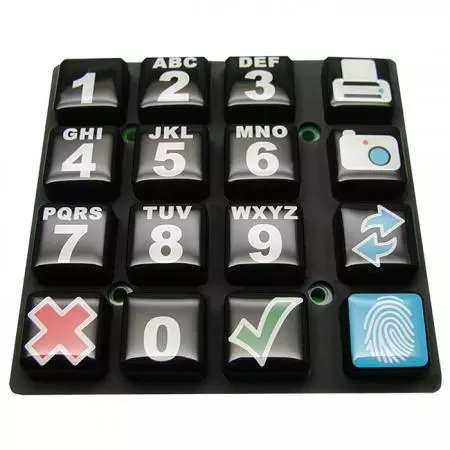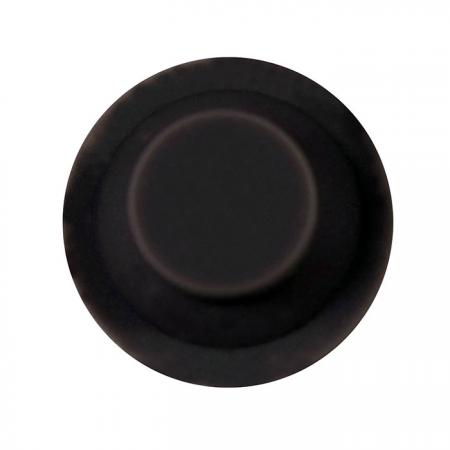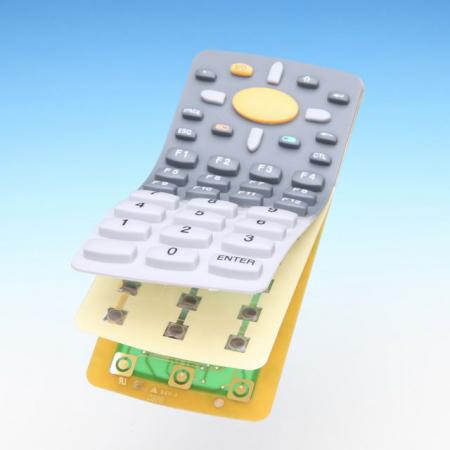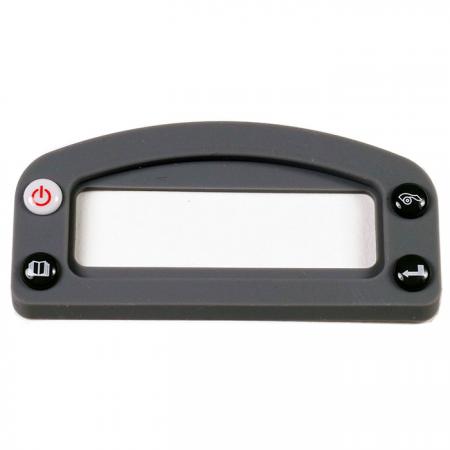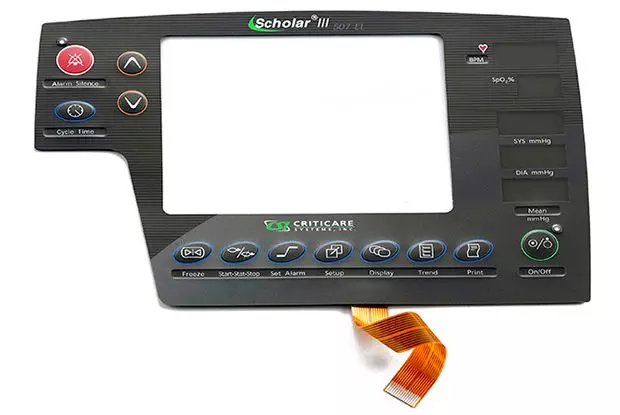Controlling device Silicone Rubber Keypad
Silicone Rubber Keypad 0302
PC material , Rubber keypad, Rubber keyboard, Elastomer keypad
Controlling device Silicone Rubber Keypad uses the compression molding properties of silicone rubber to create angled webbing around a switch center. On depression of the switch the webbing uniformly deforms to produce a tactile response. When pressure is removed from the switch the webbing returns to its neutral position with positive feedback. In order to make an electronic switch a carbon or gold pill is placed on the base of the switch center which contacts onto a printed circuit board when the web has been deformed. It is possible to vary the tactile response and travel of a key by changing the webbing design and / or the shore hardness of the silicone base material. Unusual key shapes can easily be accommodated as can key travel up to 3mm. Tactile forces can be as high as 500g depending on key size and shape.
The snap ratio of a keypad determines the tactile feel experienced by the user. The recommended snap ratio for designers to maintain is 40% - 60%; if dropped below 40% the keys will lose tactile feel but have an increased life. Loss of tactile feel means the user will not receive a "click" feedback during actuation.
Applications
- Game consoles
- Intercom
- Telephone
- Related Products
Single button Silicone Rubber Keypad
Silicone Rubber Keypad 0304
The technology of Single button Silicone Rubber Keypad uses the compression molding properties...
DetailsSilicone Rubber Keypad assembled PCB
Silicone Rubber Keypad 0301
Silicone rubber is an elastomer (rubber-like material) composed of silicone-itself a polymer-containing...
DetailsPoly button Silicone Rubber Keypad
Silicone Rubber Keypad 0305
The technology uses the compression molding properties of silicone rubber to create angled...
Details
Controlling device Silicone Rubber Keypad | Durable Keypads for Any Environment - Manufacturer Direct | YiYi Enterprise Co., Ltd
Located in Taiwan since 1974, Yi Yi Enterprise Co., Ltd. has been a membrane switch manufacturer. Their main products include, Controlling device Silicone Rubber Keypad, waterproof membrane switches, membrane switch keyboards, tactile membrane keypads, graphic design overlay, mechanical membrane keyboards, custom aluminum nameplates, cutout EL panels, industrial silicone rubber keypads and rigid-flex PCB design and fabrication, and all the materials and components are RoHS compliant.
Yi Yi is expert in manufacture of membrane keyboard switches, flexible printed circuits, rigid-flex board, el panels, silicone rubber keypad and name plates. We have acquired the skills and technology necessary to produce top-quality products that are suitable for use in computers, instruments and other electronic and electrical goods.
YI YI has been providing customers with membrane switches, both with advanced technology and 49 years of experience, YI YI ensures that each customer's requirements are met.

